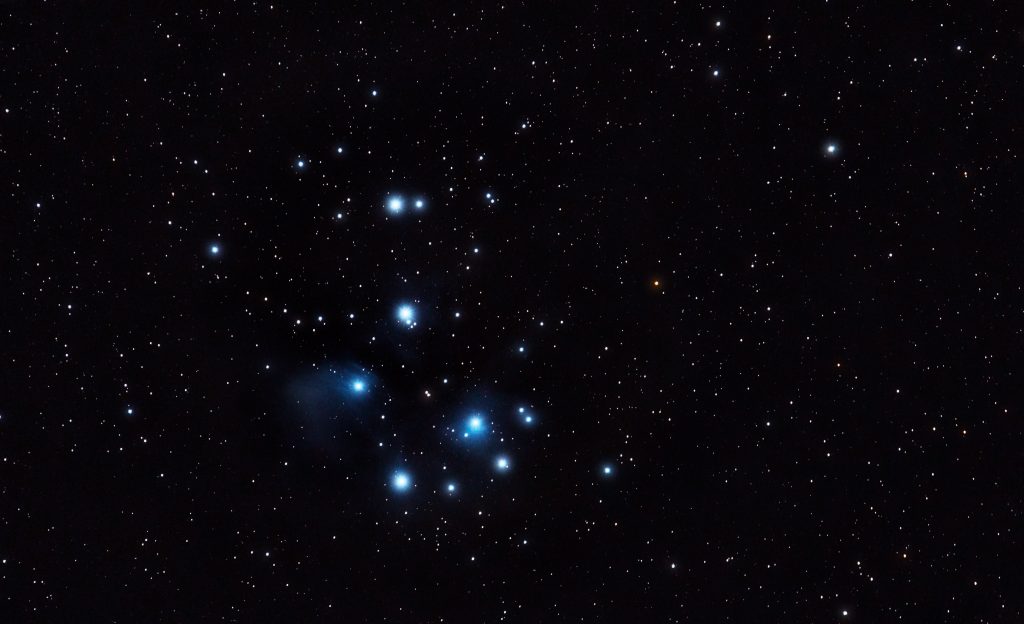Having tested the new rig with observations of M45 the Pleiades it was time to move on and increase the focal length of the lens to see if we could get in closer to some of the object. This time M45 was chosen again, to make a comparison between the first light photo of the Pleiades and a newer image with a more cropped image.

This time around I have had a couple of nights of clear skies to practice setting up the rig. By now I can set up the entire thing including balancing and polar alignment within 30 minutes. This time I have been introduced to the fantastic Photoshop plugins by Russel Croman which can be purged from his website RC-Astro.com. I have initiated the 30-day trial version of the GradientXterminator which has improved the photo quite impressively compared to the first image.

In this image, you see a touch of the gradient in the bottom lefthand corner of the image. This has to do with the picture being taken in a Bortle class 4 area. Another thing you should notice in the new picture is how the stars are now round since I have managed to get the stuck UV filter loose and removed it from the lens, to improve the sharpness of the image. All in all, it was a good night out, and I am quite satisfied with the result
M45 – Facts
The Pleiades also known as the seven sisters is an open star cluster with middle-aged, hot B-type stars. The cluster is located in the northwestern part of the constellation of Taurus. The distance to M45 is approximately 444 lightyears from the Solar system, making this cluster one of the nearest star clusters.
The apparent magnitude of M45 is 1.6 in the V-band.

